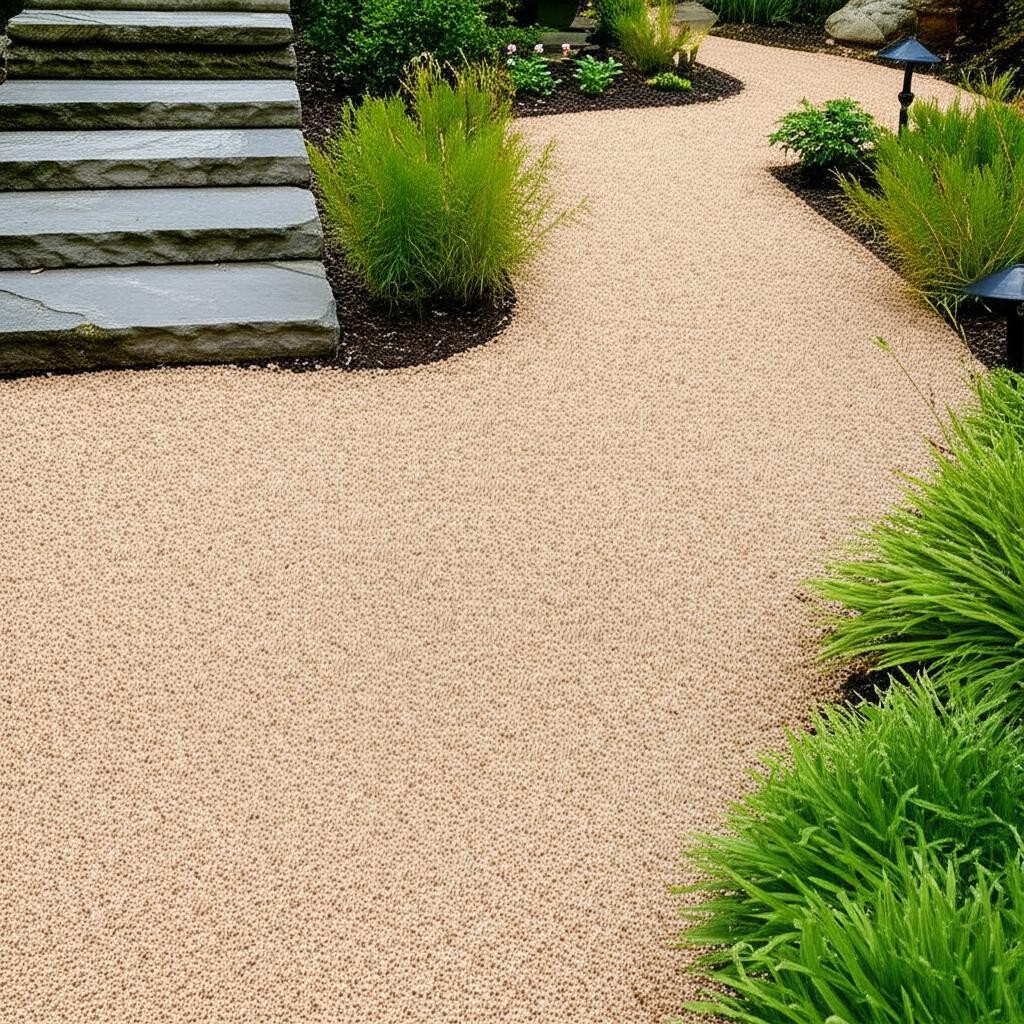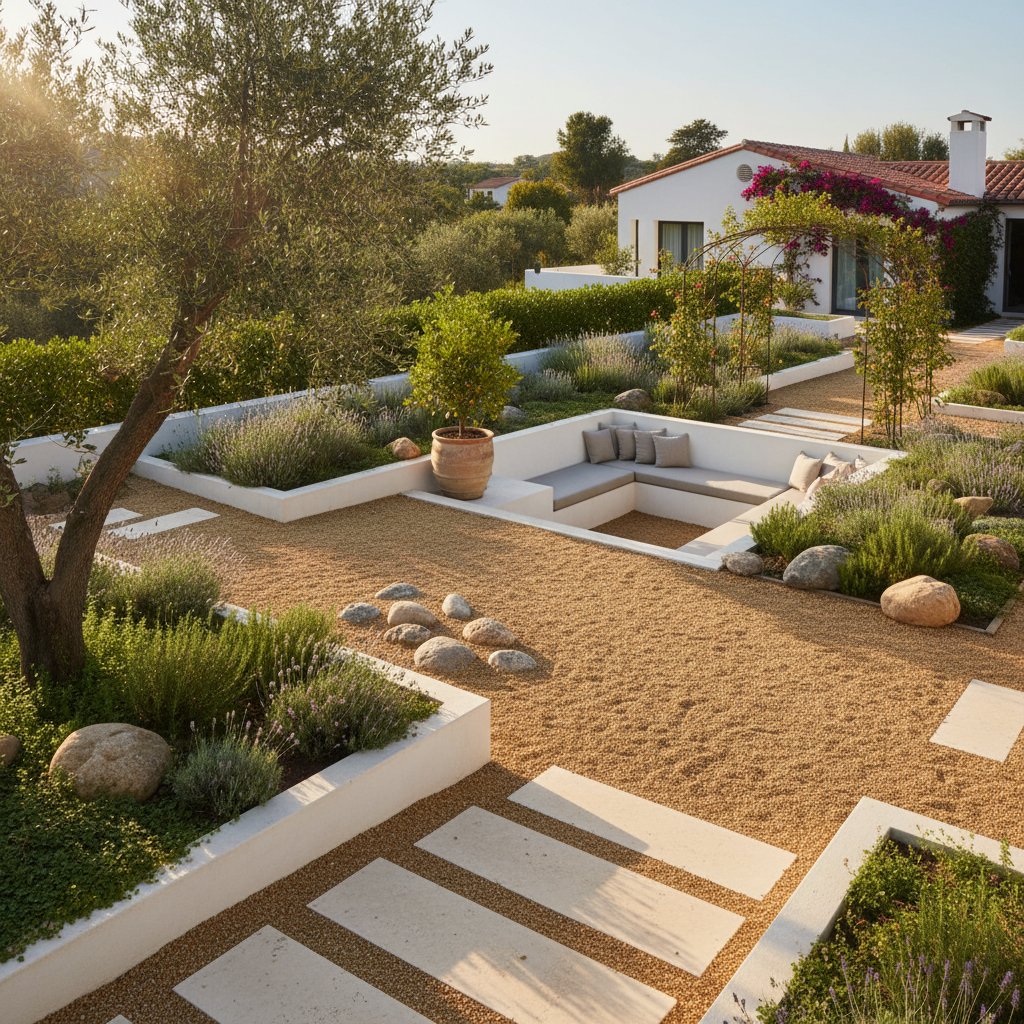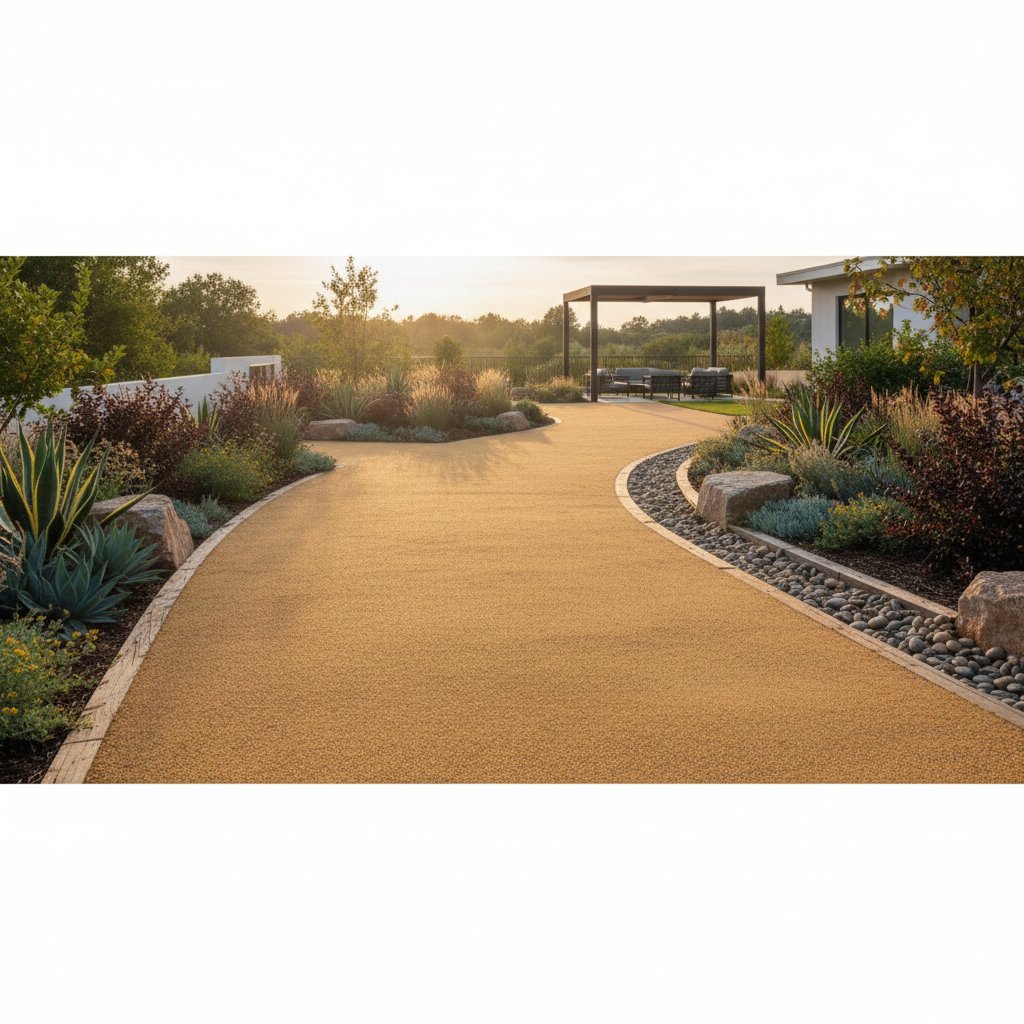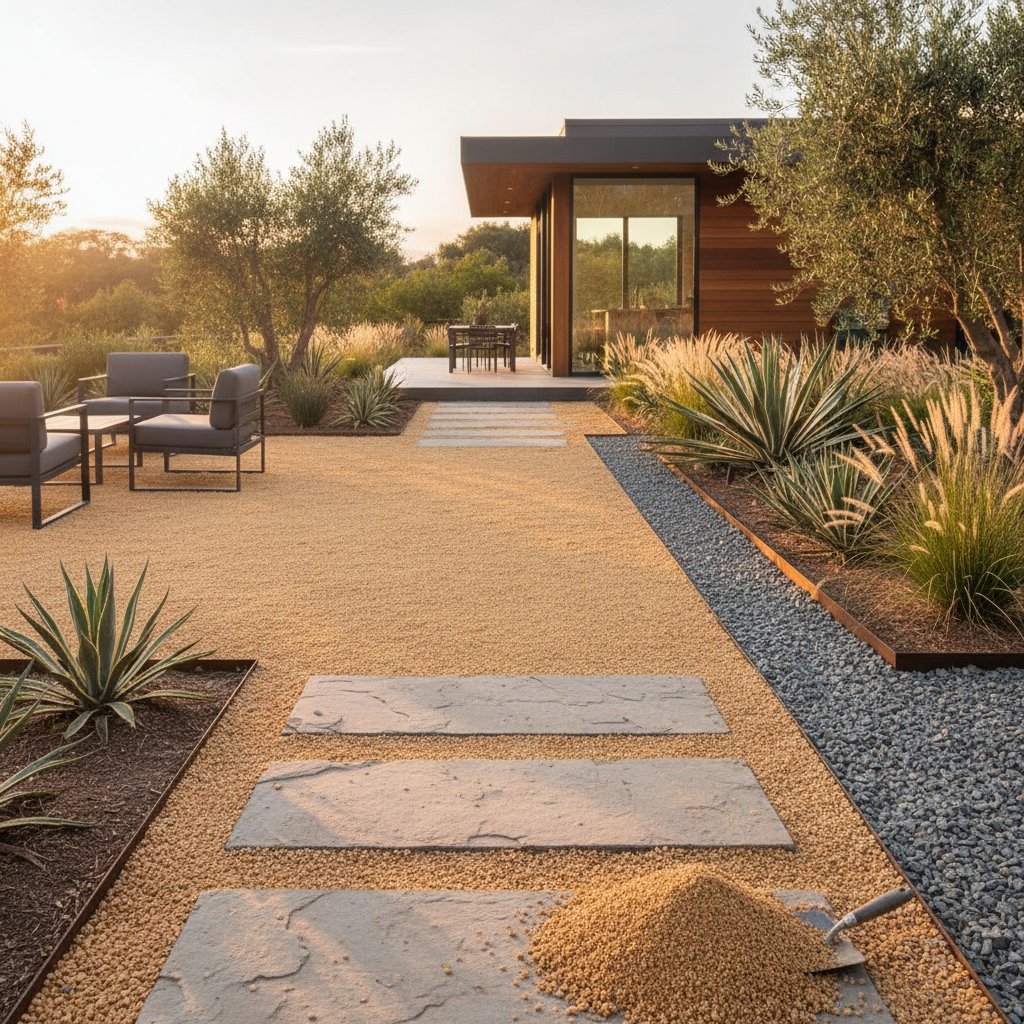Decomposed Granite: 2025's Effortless Path Upgrade
Examine your garden path and consider if it lacks cohesion. Uneven stones or encroaching grass may disrupt the flow, turning a simple stroll into an obstacle. Decomposed granite provides a subtle solution that restores balance and invites effortless movement through your outdoor spaces.
Known as DG, decomposed granite emerges from weathered granite rock, yielding a textured material that integrates seamlessly with natural surroundings. Its range of subtle hues enhances both contemporary and traditional landscapes without overwhelming them.
Understanding Decomposed Granite
Decomposed granite forms when solid granite erodes into granular particles and fine dust over geological time. This composition delivers a firm yet yielding surface underfoot, especially after compaction. Available in tones such as warm gold, rich brown, and neutral gray, it harmonizes with surrounding flora and hardscape elements.
Three primary varieties suit different applications:
- Loose DG - Ideal for casual trails or infill around stepping stones, this unbound form maintains a rustic, permeable quality.
- Stabilized DG - Incorporate a binding agent to enhance cohesion and prevent displacement from foot traffic or weather.
- Resin-bound DG - Apply resin for a sealed, resilient finish that minimizes dust and supports intensive use in entryways or patios.
Select based on traffic volume, aesthetic preferences, and desired longevity to match your garden's demands.
Assessing Your Current Space
Walk your outdoor area to identify patterns of use and potential issues. Observe areas prone to puddling or erosion, and note weed intrusion along existing edges. These observations guide whether to overlay or excavate for a new DG installation.
Map your garden layout on paper, highlighting natural pathways like shortcuts across lawns or underutilized borders. Decomposed granite conforms to irregular shapes, gentle inclines, and winding routes, offering flexibility beyond rigid alternatives like poured concrete.
Planning Your Path
Visualize the path's integration with your overall design, considering texture and connectivity. In structured gardens, pair compacted DG with metal borders for precision. In informal settings, edge loose DG with drought-tolerant plants to foster a wilder vibe.
Follow these steps for effective planning:
- Select DG type. Opt for stabilized or resin-bound versions in busy zones; reserve loose DG for ornamental routes.
- Incorporate edging. Use aluminum strips, natural stone, or treated lumber to contain the material and preserve bed integrity.
- Address drainage. Leverage DG's permeability, but install a 2- to 4-inch gravel sub-base in clay-heavy soils to promote runoff.
- Match colors. Choose shades that echo your home's siding or provide subtle contrast to foliage for cohesive visuals.
Budget for 1 to 2 cubic yards of DG per 100 square feet, adjusting for depth and type.
Bringing Your Vision to Life
Complete a DG path installation over a weekend by preparing the site thoroughly. Remove vegetation and debris, then excavate 4 to 6 inches deep for stability. Install geotextile fabric to suppress weeds, and add a compacted gravel base layer for support.
Distribute DG in 1.5- to 2-inch increments, wetting each layer lightly before compacting with a hand tamper or rented plate compactor. For stabilized DG, blend the stabilizer evenly during application per product ratios. Resin-bound mixtures require precise mixing and a 24- to 48-hour curing period under cover.
Layering ensures even density; aim for a final 3- to 4-inch depth. After completion, the surface appears integrated and resilient, enhancing your garden's narrative.
Caring for Your Decomposed Granite Path
Decomposed granite demands minimal intervention to retain its appeal. Rake periodically to level minor indentations from use. Replenish loose DG annually in high-wear spots to sustain thickness.
Stabilized and resin-bound surfaces benefit from hosing down and light brushing to remove debris. Extract weeds by hand along borders, capitalizing on the material's loose structure. Refill eroded sections promptly with damp DG and recompress for seamless repairs.
Integrating Decomposed Granite into Modern Landscapes
Decomposed granite aligns with trends toward sustainable, low-effort exteriors. Its earthy palette and permeable nature promote biodiversity by allowing water infiltration, unlike impermeable concretes that contribute to urban runoff.
This material adapts across styles: it tempers sharp lines in minimalist designs with soft edging, or complements organic elements in woodland gardens. Over time, DG develops patina without structural failure, maintaining form amid seasonal shifts.
Enhancing Garden Flow with Strategic Paths
Paths shape how you experience your yard, linking zones like patios to planting beds. Decomposed granite facilitates this by providing reliable footing that encourages exploration, even in wet conditions.
Install curves to mirror plant contours, or straight segments for efficient access. The result fosters a sense of unity, transforming disjointed areas into a cohesive retreat.
Sustaining Long-Term Garden Harmony
Observe your path's evolution through cycles of weather and growth. Moisture enhances its tones temporarily, while adjacent plants frame it dynamically. Perform seasonal checks to address settling or debris accumulation.
Adapt as needed: widen sections for gatherings or add lighting for evening use. Decomposed granite supports these evolutions, delivering enduring utility and aesthetic depth to your outdoor environment.



